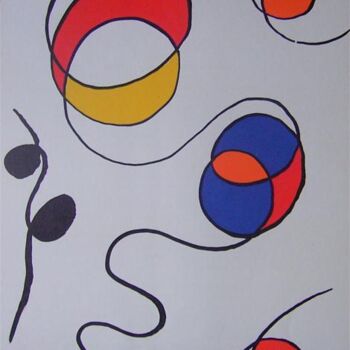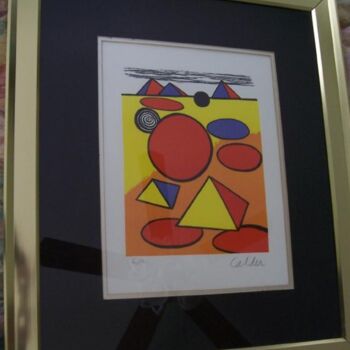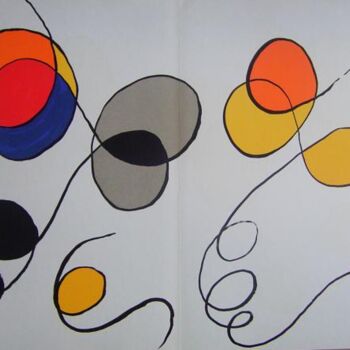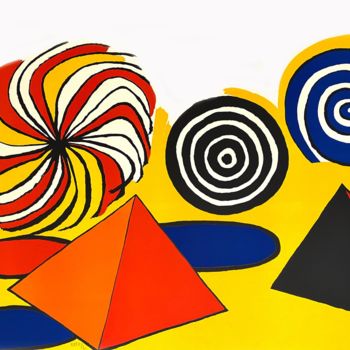Oignons (1965) Printmaking by Alexander Calder
Sold
See more from Alexander CalderThe artist offers works on commission
Did you miss the opportunity to buy this work? Good news: the artist can also create a custom work, just for you!
Sold by DAKKARA Art Galleries
-
Limited Edition (#10/100)
Printmaking,
Lithography
/
Screenprinting
on Cardboard
- Dimensions Height 28.7in, Width 37.4in
- Framing This artwork is framed (Frame + Under Acrylic Glass)
- Categories Printmaking under $20,000 Abstract
Year:
1965
Size (sheet size) US:
22 × 29 9/10 in | (framed size) 28 7/10 x 37 1/2 in
Size (sheet size) Europe:
56 × 76 cm | (framed size) 73 x 95 cm
Edition of 100.
Alexander Calder was born in Philadelphia in 1898 and died in New York in 1976.
Alexander Calder best known for his innovation of the mobile suspended sheet metal and wire assemblies that are activated in space by air currents.
Visually fascinating and emotionally engaging, those sculptures—along with his monumental outdoor bolted sheet metal stabiles, which only imply movement—make Calder one of the most-recognizable and beloved modern artists.
He also made a smaller number of sculptures in the more-traditional materials of wood and bronze and did paintings, mostly in gouache, as well as drawings, including illustrations for books, and prints, and was an inventive designer of jewellery.
Related themes
b. 1898, Lawnton, Pa.; d. 1976, New York City
Alexander Calder was born July 22, 1898, in Lawnton, Pennsylvania, into a family of artists. In 1919, he received an engineering degree from Stevens Institute of Technology, Hoboken. Calder attended the Art Students League, New York, from 1923 to 1926, studying briefly with Thomas Hart Benton and John Sloan, among others. As a freelance artist for the National Police Gazette in 1925, he spent two weeks sketching at the circus; his fascination with the subject dates from this time. He also made his first sculpture in 1925; the following year he made several constructions of animals and figures with wire and wood. Calder’s first exhibition of paintings took place in 1926 at the Artist’s Gallery, New York. Later that year, he went to Paris and attended the Académie de la Grande Chaumière. In Paris, he met Stanley William Hayter, exhibited at the 1926 Salon des Indépendants, and in 1927 began giving performances of his miniature circus. The first show of his wire animals and caricature portraits was held at the Weyhe Gallery, New York, in 1928. That same year, he met Joan Miró, who became his lifelong friend. Subsequently, Calder divided his time between France and the United States. In 1929, the Galerie Billiet gave him his first solo show in Paris. He met Frederick Kiesler, Fernand Léger, and Theo van Doesburg and visited Piet Mondrian’s studio in 1930. Calder began to experiment with abstract sculpture at this time and in 1931 and 1932 introduced moving parts into his work. These moving sculptures were called “mobiles”; the stationary constructions were to be named “stabiles.” He exhibited with the Abstraction-Création group in Paris in 1933. In 1943, the Museum of Modern Art, New York, gave him a solo exhibition.
During the 1950s, Calder traveled widely and executed Towers (wall mobiles) and Gongs (sound mobiles). He won the Grand Prize for Sculpture at the 1952 Venice Biennale. Late in the decade, the artist worked extensively with gouache; from this period, he executed numerous major public commissions. In 1964–65, the Solomon R. Guggenheim Museum, New York, presented a Calder retrospective. He began the Totems in 1966 and the Animobiles in 1971; both are variations on the standing mobile. A Calder exhibition was held at the Whitney Museum of American Art, New York, in 1976. Calder died November 11, 1976, in New York.
-
Nationality:
UNITED STATES

- Date of birth : 1898
- Artistic domains: Represented by a Gallery,
- Groups: Contemporary American Artists Artists presented by a gallery

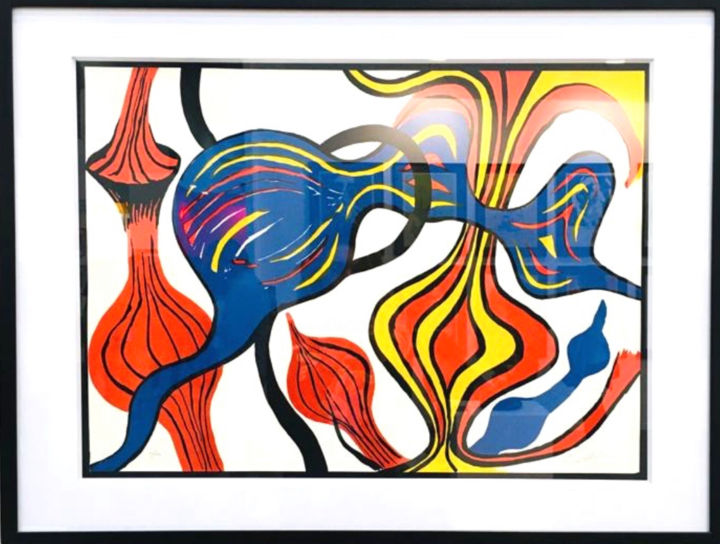



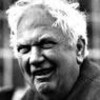
 Tom Ford's Universe: From Fashion and Film to Art and Collecting
Tom Ford's Universe: From Fashion and Film to Art and Collecting
